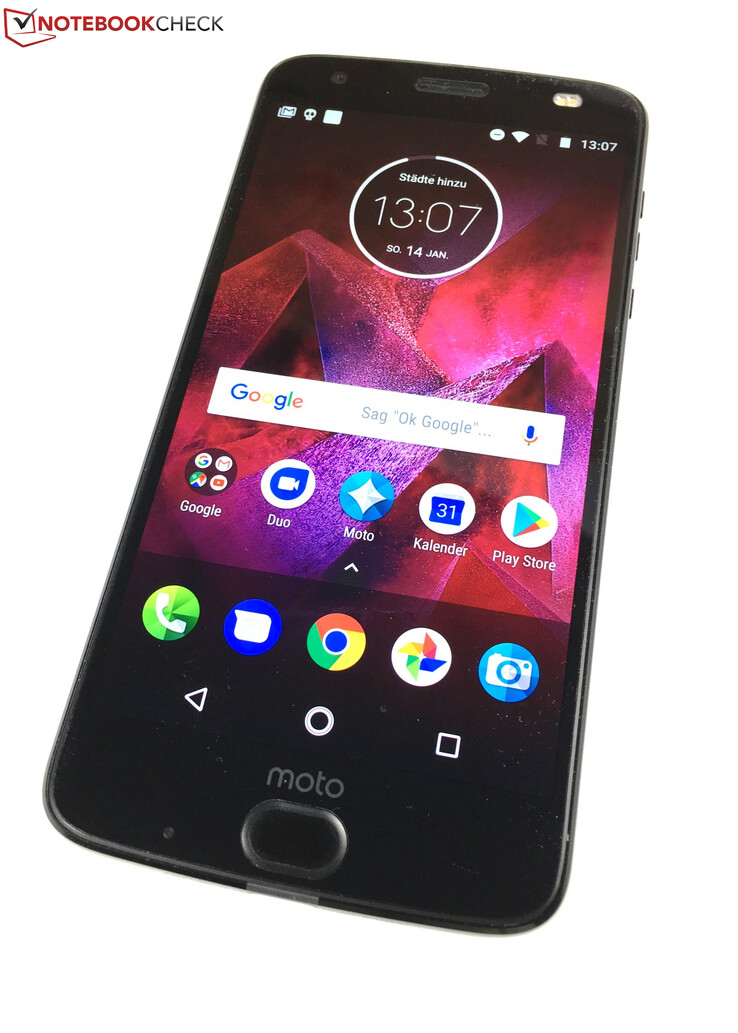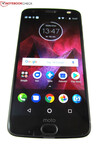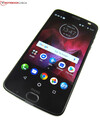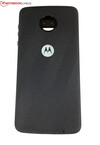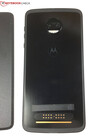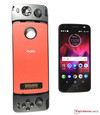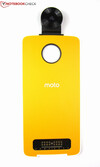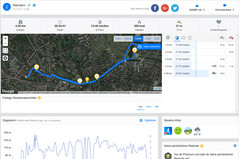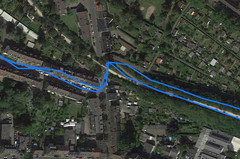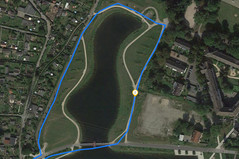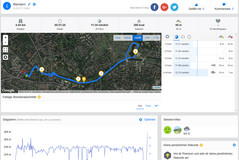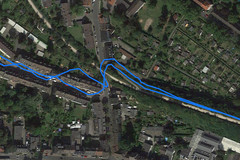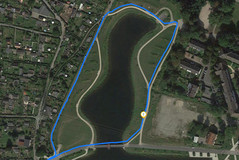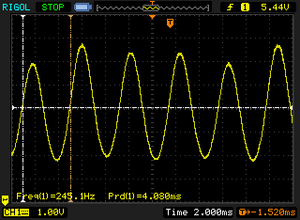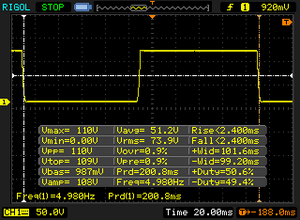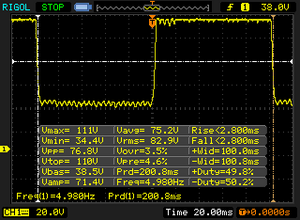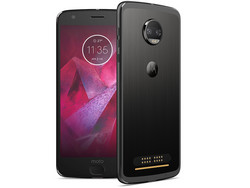Breve Análise do Smartphone Motorola Moto Z2 Force
Os Top 10
» Os Top 10 Portáteis Multimídia
» Os Top 10 Portáteis de Jogos
» Os Top 10 Portáteis Leves para Jogos
» Os Top 10 Portáteis Acessíveis de Escritório/Empresariais
» Os Top 10 Portáteis Premium de Escritório/Empresariais
» Os Top 10 dos Portáteis Workstation
» Os Top 10 Subportáteis
» Os Top 10 Ultrabooks
» Os Top 10 Conversíveis
» Os Top 10 Tablets
» Os Top 10 Smartphones
» A melhores Telas de Portáteis Analisadas Pela Notebookcheck
» Top 10 dos portáteis abaixo dos 500 Euros da Notebookcheck
» Top 10 dos Portáteis abaixo dos 300 Euros
Size Comparison
| |||||||||||||||||||||||||
iluminação: 88 %
iluminação com acumulador: 511 cd/m²
Contraste: ∞:1 (Preto: 0 cd/m²)
ΔE Color 4.3 | 0.5-29.43 Ø5
ΔE Greyscale 3.7 | 0.57-98 Ø5.3
Gamma: 2.11
| Motorola Moto Z2 Force OLED, 2560x1440, 5.50 | Huawei Mate 10 Pro OLED, 2160x1080, 6.00 | Samsung Galaxy Note 8 Super AMOLED, 2960x1440, 6.30 | HTC U11 Super LCD5, 2560x1440, 5.50 | LG V30 OLED, 2880x1440, 6.00 | Apple iPhone 8 Plus IPS, 1920x1080, 5.50 | |
|---|---|---|---|---|---|---|
| Screen | 35% | 21% | 16% | -11% | 34% | |
| Brightness middle | 511 | 629 23% | 530 4% | 482 -6% | 432 -15% | 559 9% |
| Brightness | 526 | 636 21% | 536 2% | 472 -10% | 428 -19% | 538 2% |
| Brightness Distribution | 88 | 94 7% | 93 6% | 90 2% | 87 -1% | 90 2% |
| Black Level * | 0.33 | 0.38 | ||||
| Colorchecker dE 2000 * | 4.3 | 1.7 60% | 2.6 40% | 3.2 26% | 4.18 3% | 1.3 70% |
| Colorchecker dE 2000 max. * | 9.6 | 3.6 62% | 5.1 47% | 5.4 44% | 8.53 11% | 2.7 72% |
| Greyscale dE 2000 * | 3.7 | 2.4 35% | 2.7 27% | 2.2 41% | 5.3 -43% | 1.8 51% |
| Gamma | 2.11 104% | 2.15 102% | 2.04 108% | 2.22 99% | 2.33 94% | 2.25 98% |
| CCT | 7075 92% | 6337 103% | 6206 105% | 6581 99% | 7487 87% | 6797 96% |
| Contrast | 1461 | 1471 |
* ... smaller is better
Screen Flickering / PWM (Pulse-Width Modulation)
| Screen flickering / PWM detected | 245.1 Hz | ||
The display backlight flickers at 245.1 Hz (worst case, e.g., utilizing PWM) . The frequency of 245.1 Hz is relatively low, so sensitive users will likely notice flickering and experience eyestrain at the stated brightness setting and below. In comparison: 53 % of all tested devices do not use PWM to dim the display. If PWM was detected, an average of 17942 (minimum: 5 - maximum: 3846000) Hz was measured. | |||
Display Response Times
| ↔ Response Time Black to White | ||
|---|---|---|
| 4.8 ms ... rise ↗ and fall ↘ combined | ↗ 2.4 ms rise | |
| ↘ 2.4 ms fall | ||
| The screen shows very fast response rates in our tests and should be very well suited for fast-paced gaming. In comparison, all tested devices range from 0.1 (minimum) to 240 (maximum) ms. » 12 % of all devices are better. This means that the measured response time is better than the average of all tested devices (21.5 ms). | ||
| ↔ Response Time 50% Grey to 80% Grey | ||
| 5.6 ms ... rise ↗ and fall ↘ combined | ↗ 2.8 ms rise | |
| ↘ 2.8 ms fall | ||
| The screen shows very fast response rates in our tests and should be very well suited for fast-paced gaming. In comparison, all tested devices range from 0.2 (minimum) to 636 (maximum) ms. » 12 % of all devices are better. This means that the measured response time is better than the average of all tested devices (33.8 ms). | ||
| AnTuTu v6 - Total Score (sort by value) | |
| Motorola Moto Z2 Force | |
| Huawei Mate 10 Pro | |
| Samsung Galaxy Note 8 | |
| HTC U11 | |
| LG V30 | |
| Apple iPhone 8 Plus | |
| PCMark for Android | |
| Work performance score (sort by value) | |
| Motorola Moto Z2 Force | |
| Huawei Mate 10 Pro | |
| Samsung Galaxy Note 8 | |
| HTC U11 | |
| LG V30 | |
| Work 2.0 performance score (sort by value) | |
| Motorola Moto Z2 Force | |
| Huawei Mate 10 Pro | |
| Samsung Galaxy Note 8 | |
| HTC U11 | |
| LG V30 | |
| Geekbench 4.4 | |
| 64 Bit Single-Core Score (sort by value) | |
| Motorola Moto Z2 Force | |
| Huawei Mate 10 Pro | |
| Samsung Galaxy Note 8 | |
| HTC U11 | |
| LG V30 | |
| Apple iPhone 8 Plus | |
| 64 Bit Multi-Core Score (sort by value) | |
| Motorola Moto Z2 Force | |
| Huawei Mate 10 Pro | |
| Samsung Galaxy Note 8 | |
| HTC U11 | |
| LG V30 | |
| Apple iPhone 8 Plus | |
| Compute RenderScript Score (sort by value) | |
| Huawei Mate 10 Pro | |
| Samsung Galaxy Note 8 | |
| HTC U11 | |
| LG V30 | |
| GFXBench (DX / GLBenchmark) 2.7 | |
| T-Rex Onscreen (sort by value) | |
| Motorola Moto Z2 Force | |
| Huawei Mate 10 Pro | |
| Samsung Galaxy Note 8 | |
| HTC U11 | |
| LG V30 | |
| Apple iPhone 8 Plus | |
| 1920x1080 T-Rex Offscreen (sort by value) | |
| Motorola Moto Z2 Force | |
| Huawei Mate 10 Pro | |
| Samsung Galaxy Note 8 | |
| HTC U11 | |
| LG V30 | |
| Apple iPhone 8 Plus | |
| GFXBench 3.0 | |
| on screen Manhattan Onscreen OGL (sort by value) | |
| Motorola Moto Z2 Force | |
| Huawei Mate 10 Pro | |
| Samsung Galaxy Note 8 | |
| HTC U11 | |
| LG V30 | |
| Apple iPhone 8 Plus | |
| 1920x1080 1080p Manhattan Offscreen (sort by value) | |
| Motorola Moto Z2 Force | |
| Huawei Mate 10 Pro | |
| Samsung Galaxy Note 8 | |
| HTC U11 | |
| LG V30 | |
| Apple iPhone 8 Plus | |
| GFXBench 3.1 | |
| on screen Manhattan ES 3.1 Onscreen (sort by value) | |
| Motorola Moto Z2 Force | |
| Huawei Mate 10 Pro | |
| Samsung Galaxy Note 8 | |
| HTC U11 | |
| LG V30 | |
| Apple iPhone 8 Plus | |
| 1920x1080 Manhattan ES 3.1 Offscreen (sort by value) | |
| Motorola Moto Z2 Force | |
| Huawei Mate 10 Pro | |
| Samsung Galaxy Note 8 | |
| HTC U11 | |
| LG V30 | |
| Apple iPhone 8 Plus | |
| GFXBench | |
| on screen Car Chase Onscreen (sort by value) | |
| Motorola Moto Z2 Force | |
| Huawei Mate 10 Pro | |
| Samsung Galaxy Note 8 | |
| HTC U11 | |
| LG V30 | |
| 1920x1080 Car Chase Offscreen (sort by value) | |
| Motorola Moto Z2 Force | |
| Huawei Mate 10 Pro | |
| Samsung Galaxy Note 8 | |
| HTC U11 | |
| LG V30 | |
| JetStream 1.1 - Total Score | |
| Apple iPhone 8 Plus | |
| Samsung Galaxy Note 8 (Samsung Browser 6.0) | |
| HTC U11 (Chrome 58) | |
| Motorola Moto Z2 Force (Chrome 63.0.3239.111) | |
| Huawei Mate 10 Pro (Chrome 61) | |
| LG V30 (Chrome 62) | |
| Octane V2 - Total Score | |
| Apple iPhone 8 Plus | |
| Samsung Galaxy Note 8 (Samsung Browser 6.0) | |
| Motorola Moto Z2 Force (Chrome 63.0.3239.111) | |
| HTC U11 (Chrome 58) | |
| LG V30 (Chrome 62) | |
| Huawei Mate 10 Pro (Chrome 61) | |
| Mozilla Kraken 1.1 - Total | |
| LG V30 (Chrome 62) | |
| Huawei Mate 10 Pro (Chrome 61) | |
| Motorola Moto Z2 Force (Chrome 63.0.3239.111) | |
| HTC U11 (Chrome 58) | |
| Samsung Galaxy Note 8 (Samsung Browser 6.0) | |
| Apple iPhone 8 Plus | |
| WebXPRT 2015 - Overall | |
| Apple iPhone 8 Plus | |
| HTC U11 (Chrome 58) | |
| Motorola Moto Z2 Force (Chrome 63.0.3239.111) | |
| Samsung Galaxy Note 8 (Samsung Browser 6.0) | |
| Huawei Mate 10 Pro (Chrome 61) | |
| LG V30 (Chrome 62) | |
* ... smaller is better
| Motorola Moto Z2 Force | Huawei Mate 10 Pro | Samsung Galaxy Note 8 | HTC U11 | LG V30 | |
|---|---|---|---|---|---|
| AndroBench 3-5 | 25% | -15% | -11% | -30% | |
| Sequential Read 256KB | 696 | 732 5% | 797 15% | 717 3% | 669 -4% |
| Sequential Write 256KB | 213.6 | 208.7 -2% | 205.9 -4% | 206.4 -3% | 193.2 -10% |
| Random Read 4KB | 148.8 | 132.3 -11% | 122.5 -18% | 91.4 -39% | 78.2 -47% |
| Random Write 4KB | 78.6 | 164.4 109% | 14.55 -81% | 80 2% | 10.21 -87% |
| Sequential Read 256KB SDCard | 77.4 ? | 67.9 ? -12% | 68.8 ? -11% | 62.8 -19% | |
| Sequential Write 256KB SDCard | 54.7 ? | 59.3 ? 8% | 46.25 ? -15% | 47.2 -14% |
| Dead Trigger 2 | |||
| Configurações | Valor | ||
| high | 60 fps | ||
| Asphalt 8: Airborne | |||
| Configurações | Valor | ||
| high | 30 fps | ||
| very low | 30 fps | ||
(+) The maximum temperature on the upper side is 35 °C / 95 F, compared to the average of 35 °C / 95 F, ranging from 21.9 to 56 °C for the class Smartphone.
(+) The bottom heats up to a maximum of 35.4 °C / 96 F, compared to the average of 33.8 °C / 93 F
(+) In idle usage, the average temperature for the upper side is 20.6 °C / 69 F, compared to the device average of 32.7 °C / 91 F.
Motorola Moto Z2 Force audio analysis
(+) | speakers can play relatively loud (84.8 dB)
Bass 100 - 315 Hz
(-) | nearly no bass - on average 28.4% lower than median
(±) | linearity of bass is average (8.2% delta to prev. frequency)
Mids 400 - 2000 Hz
(+) | balanced mids - only 2.7% away from median
(+) | mids are linear (5.1% delta to prev. frequency)
Highs 2 - 16 kHz
(+) | balanced highs - only 2.4% away from median
(+) | highs are linear (1.6% delta to prev. frequency)
Overall 100 - 16.000 Hz
(±) | linearity of overall sound is average (17.7% difference to median)
Compared to same class
» 9% of all tested devices in this class were better, 7% similar, 84% worse
» The best had a delta of 12%, average was 38%, worst was 134%
Compared to all devices tested
» 30% of all tested devices were better, 8% similar, 62% worse
» The best had a delta of 4%, average was 25%, worst was 134%
Huawei Mate 10 Pro audio analysis
(+) | speakers can play relatively loud (84.4 dB)
Bass 100 - 315 Hz
(-) | nearly no bass - on average 28.1% lower than median
(±) | linearity of bass is average (10.6% delta to prev. frequency)
Mids 400 - 2000 Hz
(±) | reduced mids - on average 7.4% lower than median
(±) | linearity of mids is average (9.2% delta to prev. frequency)
Highs 2 - 16 kHz
(±) | higher highs - on average 7% higher than median
(+) | highs are linear (3% delta to prev. frequency)
Overall 100 - 16.000 Hz
(±) | linearity of overall sound is average (25.9% difference to median)
Compared to same class
» 60% of all tested devices in this class were better, 7% similar, 33% worse
» The best had a delta of 12%, average was 38%, worst was 134%
Compared to all devices tested
» 76% of all tested devices were better, 5% similar, 19% worse
» The best had a delta of 4%, average was 25%, worst was 134%
Samsung Galaxy Note 8 audio analysis
(+) | speakers can play relatively loud (86.9 dB)
Bass 100 - 315 Hz
(-) | nearly no bass - on average 27.1% lower than median
(±) | linearity of bass is average (11% delta to prev. frequency)
Mids 400 - 2000 Hz
(+) | balanced mids - only 4.4% away from median
(+) | mids are linear (5.3% delta to prev. frequency)
Highs 2 - 16 kHz
(±) | higher highs - on average 7.6% higher than median
(±) | linearity of highs is average (7.2% delta to prev. frequency)
Overall 100 - 16.000 Hz
(±) | linearity of overall sound is average (22.2% difference to median)
Compared to same class
» 40% of all tested devices in this class were better, 7% similar, 53% worse
» The best had a delta of 12%, average was 38%, worst was 134%
Compared to all devices tested
» 59% of all tested devices were better, 7% similar, 34% worse
» The best had a delta of 4%, average was 25%, worst was 134%
| desligado | |
| Ocioso | |
| Carga |
|
| Motorola Moto Z2 Force 2730 mAh | Huawei Mate 10 Pro 4000 mAh | Samsung Galaxy Note 8 3300 mAh | HTC U11 3000 mAh | LG V30 3300 mAh | Apple iPhone 8 Plus 2691 mAh | |
|---|---|---|---|---|---|---|
| Power Consumption | -43% | -46% | -77% | -41% | -99% | |
| Idle Minimum * | 0.52 | 0.85 -63% | 0.73 -40% | 0.73 -40% | 0.72 -38% | 0.72 -38% |
| Idle Average * | 0.84 | 1.15 -37% | 1.44 -71% | 1.96 -133% | 1.37 -63% | 2.45 -192% |
| Idle Maximum * | 0.85 | 1.23 -45% | 1.53 -80% | 1.98 -133% | 1.41 -66% | 2.52 -196% |
| Load Average * | 2.71 | 4.12 -52% | 4.56 -68% | 4.82 -78% | 3.46 -28% | 3.84 -42% |
| Load Maximum * | 7.2 | 8.42 -17% | 5.09 29% | 7.15 1% | 7.83 -9% | 9.02 -25% |
* ... smaller is better
| Motorola Moto Z2 Force 2730 mAh | Huawei Mate 10 Pro 4000 mAh | Samsung Galaxy Note 8 3300 mAh | HTC U11 3000 mAh | LG V30 3300 mAh | Apple iPhone 8 Plus 2691 mAh | Lenovo Moto Z2 Play 3000 mAh | |
|---|---|---|---|---|---|---|---|
| Battery Runtime | 22% | -23% | -24% | 10% | 1% | 23% | |
| Reader / Idle | 1630 | 1744 7% | 1134 -30% | 1250 -23% | 1914 17% | 2085 28% | 1589 -3% |
| H.264 | 811 | 929 15% | 662 -18% | 498 -39% | 822 1% | 733 -10% | 946 17% |
| WiFi v1.3 | 531 | 818 54% | 474 -11% | 560 5% | 774 46% | 657 24% | 749 41% |
| Load | 354 | 398 12% | 246 -31% | 212 -40% | 267 -25% | 211 -40% | 477 35% |
Pro
Contra
Sem dúvida, o Moto Z2 Force é um smartphone de gama alta excepcional com muitos pros e alguns contras. Primeiro o primeiro: o desempenho de jogos e aplicativos, velocidades de transferência Wi-Fi, sua brilhante tela WQHD OLED e a tela à prova de quebra são excelentes. O Android 8.0, que já está disponível em alguns países selecionados, é uma atualização esperada e vai preparar este smartphone para o futuro, ainda mais.
Assim como toda a família Moto Z, a Moto Z2 Force também se beneficia dos Moto Mods que são fáceis de usar e podem adicionar recursos incrivelmente úteis. É verdade que acessórios de terceiros geralmente são mais baratos, mas a facilidade de uso de um Moto Mod é absolutamente deslumbrante. E ao contrário de muitos outros acessórios fabricados pelo fabricante, os Moto Mods não são específicos do modelo, mas podem ser usados em uma ampla variedade de smartphones Motorola. Se você já possui uma série de Moto Mods e está procurando um novo smartphone para usá-los, por que não considerar o decentemente equipado e muito mais barato Moto Z2 Playde gama média?
O virtualmente indestrutível Motorola Moto Z2 Force oferece um desempenho fenomenal. De todas as coisas, é a proteção da tela com sua susceptibilidade a arranhões que nos mais nos incomodou.
Infelizmente, não podemos recomendar a Moto Z2 Force sem emitir pelo menos algumas advertências. Estranhamente, a única característica que torna este smartphone excepcional - a proteção da tela - também é sua maior fraqueza: ela sofre de arranhões muito facilmente. Ao contrário de seus concorrentes, como o Huawei Mate 10 Pro, o Z2 Force não possui uma certificação IP67 e, portanto, não é nem resistente à poeira, somente à água. A câmera se desempenhou muito bem em condições de iluminação ideais, mas não conseguiu nos impressionar em condições de pouca luz, apesar do seu sensor duplo, supostamente projetado especificamente para melhorar a fotografia com pouca luz.
Motorola Moto Z2 Force
-
01/15/2018 v6(old)
Manuel Masiero


 Deutsch
Deutsch English
English Español
Español Français
Français Italiano
Italiano Nederlands
Nederlands Polski
Polski Português
Português Русский
Русский Türkçe
Türkçe Svenska
Svenska Chinese
Chinese Magyar
Magyar